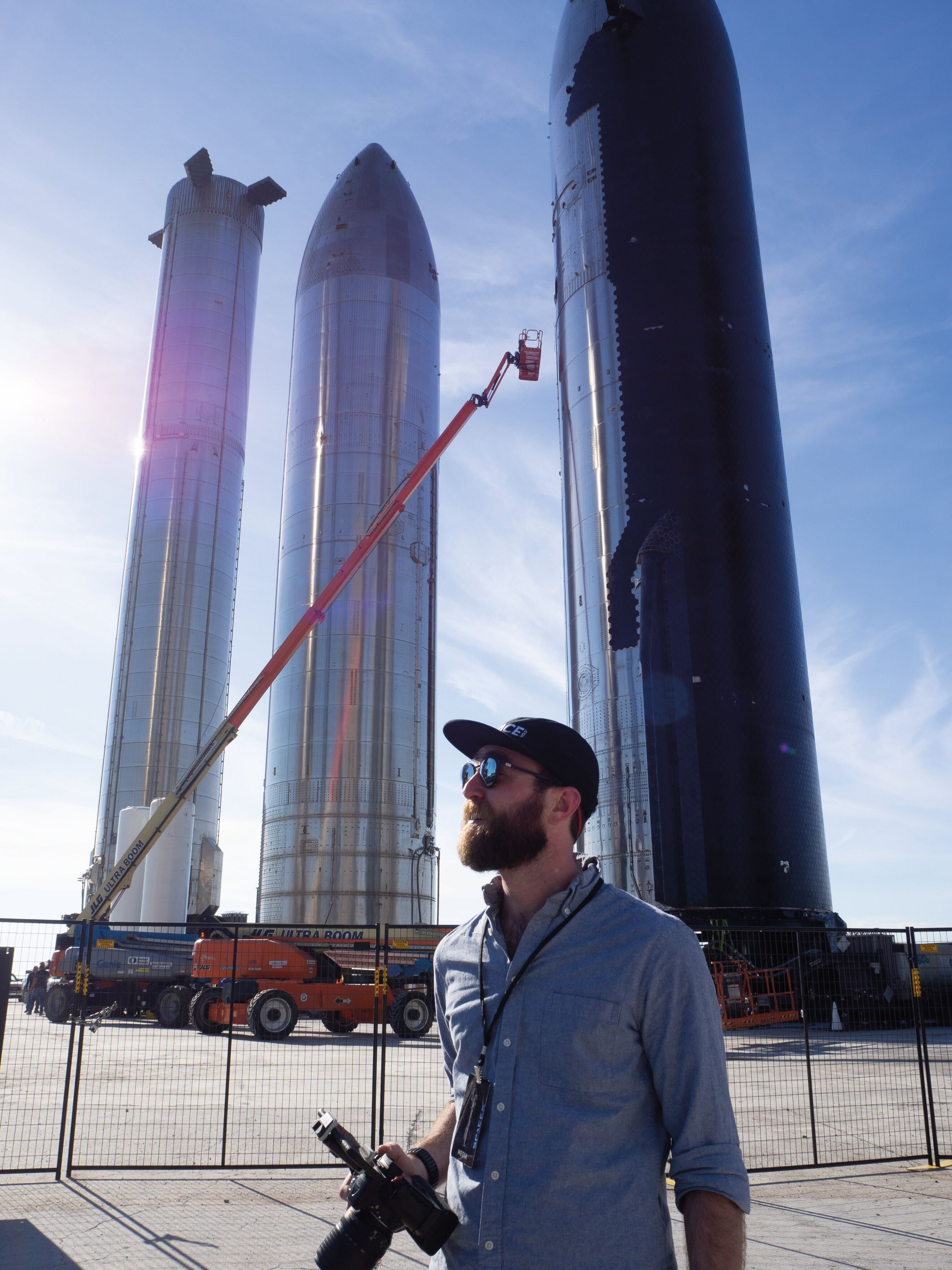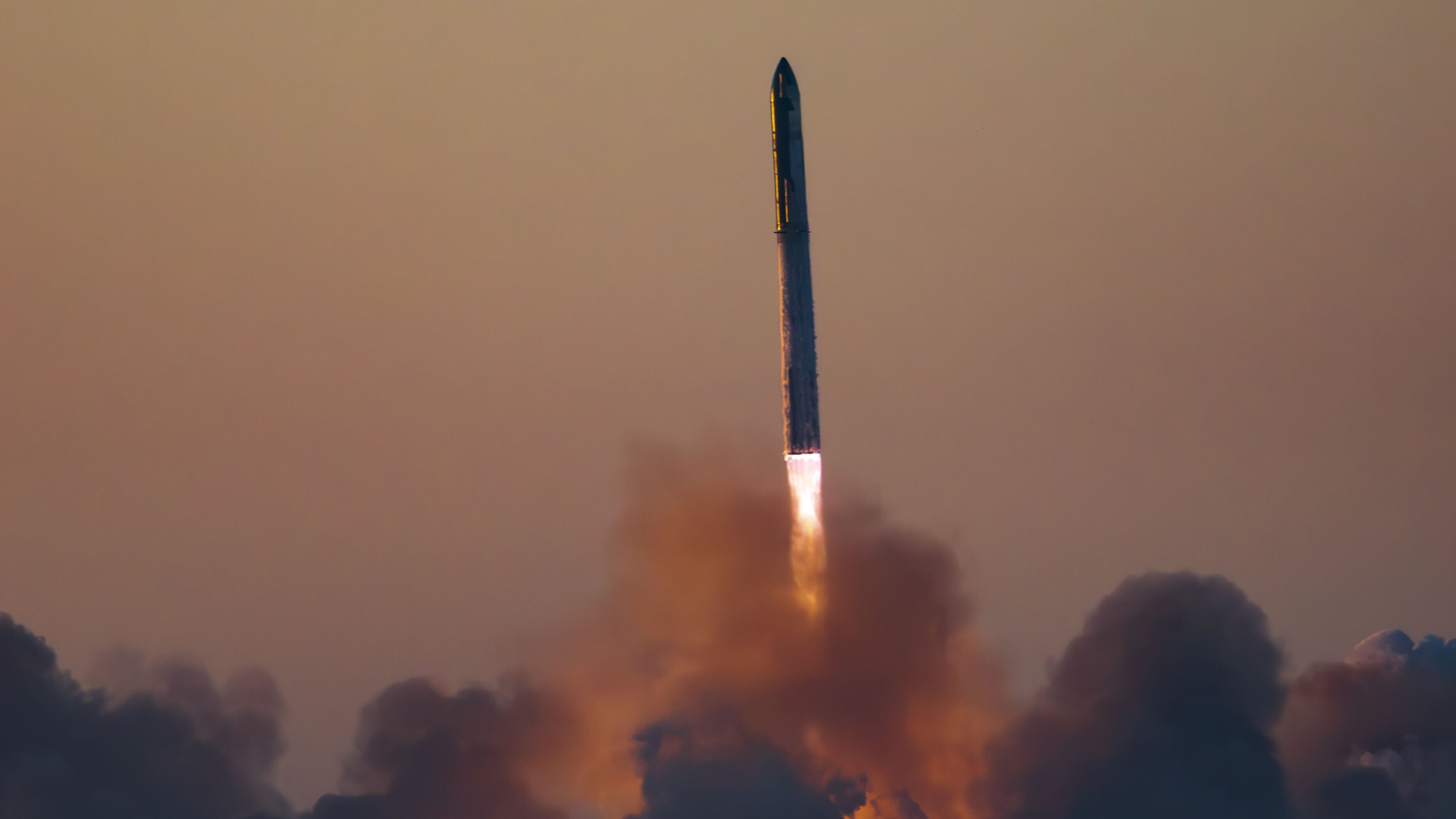
Since I began covering the space beat, I have had the opportunity to attend numerous rocket launches in person, but seeing Starship was a completely different experience.
Yes, it's a giant rocket — the largest ever built — and part of what makes seeing a rocket launch so amazing is the sheer enormity of size and power you feel when watching one take flight, but that's not what really set this one apart. This launch felt special because of the people who flocked to witness the occasion, and the personal impact getting so close to a rocket so big can have.
My journey down to Starbase, SpaceX's test and manufacturing facility on Boca Chica Beach, in Texas, began Tuesday (Nov. 14). From where I live, the drive down took about 21 hours, which I split into two days. Boca Chica is located on the southernmost tip of the southernmost tip of the incredibly large state of Texas, with the Mexican border less than three miles away. The closest town is Brownsville, but most people who are visiting the area, whether it be for Starship or not, stay on South Padre Island, north of Boca Chica. Though, to drive to Starbase from South Padre Island, one must drive east, through Brownsville, in a schlep that takes about an hour, each direction.
For the second day of my drive down, I left as early as possible and headed straight for Starbase. I knew the rocket would soon be stacked at the launch tower, and wanted to get as many photos of the behemoth as I could while there was still some daylight.
Starbase is built along a public road, which leads to a public beach that anyone is allowed to drive down. There's room along the road for parking, and basically anywhere that's outside of SpaceX's property line, which is either fenced-in or marked with "Private Property" signs, is free to roam. I'd been told about just how close the property line came up to the launchpad, and I'd seen pictures, but seeing it in person was surreal.
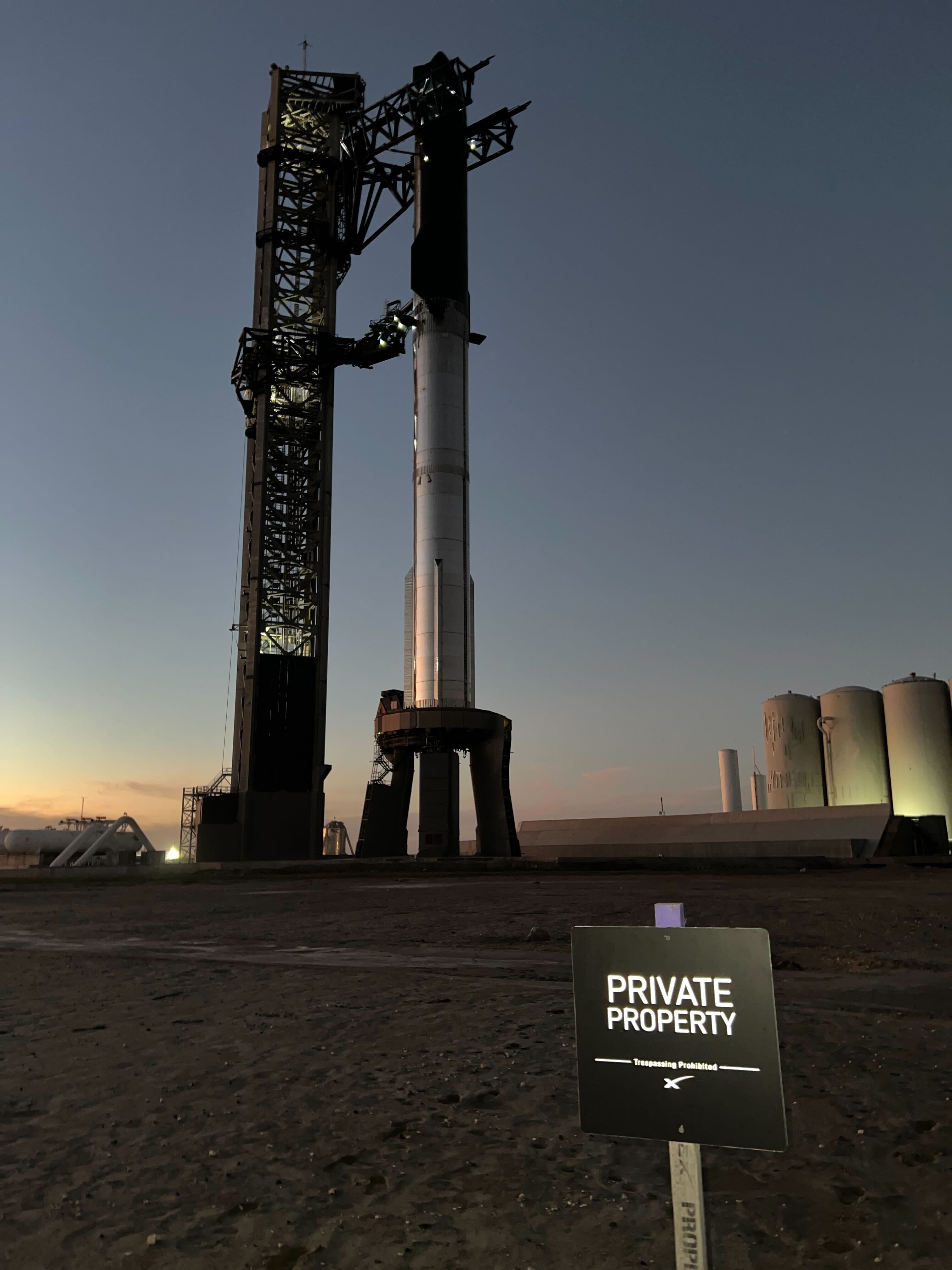
The majority of rockets launches in the United States take place from Cape Canaveral, Florida, home to NASA's Kennedy Space Center (KSC), Patrick Space Force Base and Cape Canaveral Space Force Station. Attending one of those launches as a member of the media involves agency background checks, security badging and chaperoned bus rides from the press site out to the launchpads. For setting up remote cameras and other equipment, the closest press gets to any rocket is about a half-mile (0.8 kilometers). There's no wondering off during those events, and certainly no public access other than KSC visitor center bus tours.
At Starbase, it's the complete opposite. The launchpad stands a mere 1,300 feet (400 meters) from the shore, and the beach and surrounding sand dunes are all publicly accessible. There's no media badging, no guided tours — just the world's largest rocket standing on full display for the masses. I was awestruck.
As you drive down Boca Chica Boulevard toward the beach, the launch tower (and Starship, if it's on the pad), the tallest thing on the horizon stands unmistakably visible from twenty miles or more.
Upon reaching Starbase, you first pass a row of tall hangar bays where multiple Starship spacecraft are being assembled. A so-called "rocket garden" of shiny Starships sits at the end of one pull-off street, which is also publicly available to walk down. I walked down the rocket garden road to stand toe-to-toe with Starship, and its size was really put into perspective.
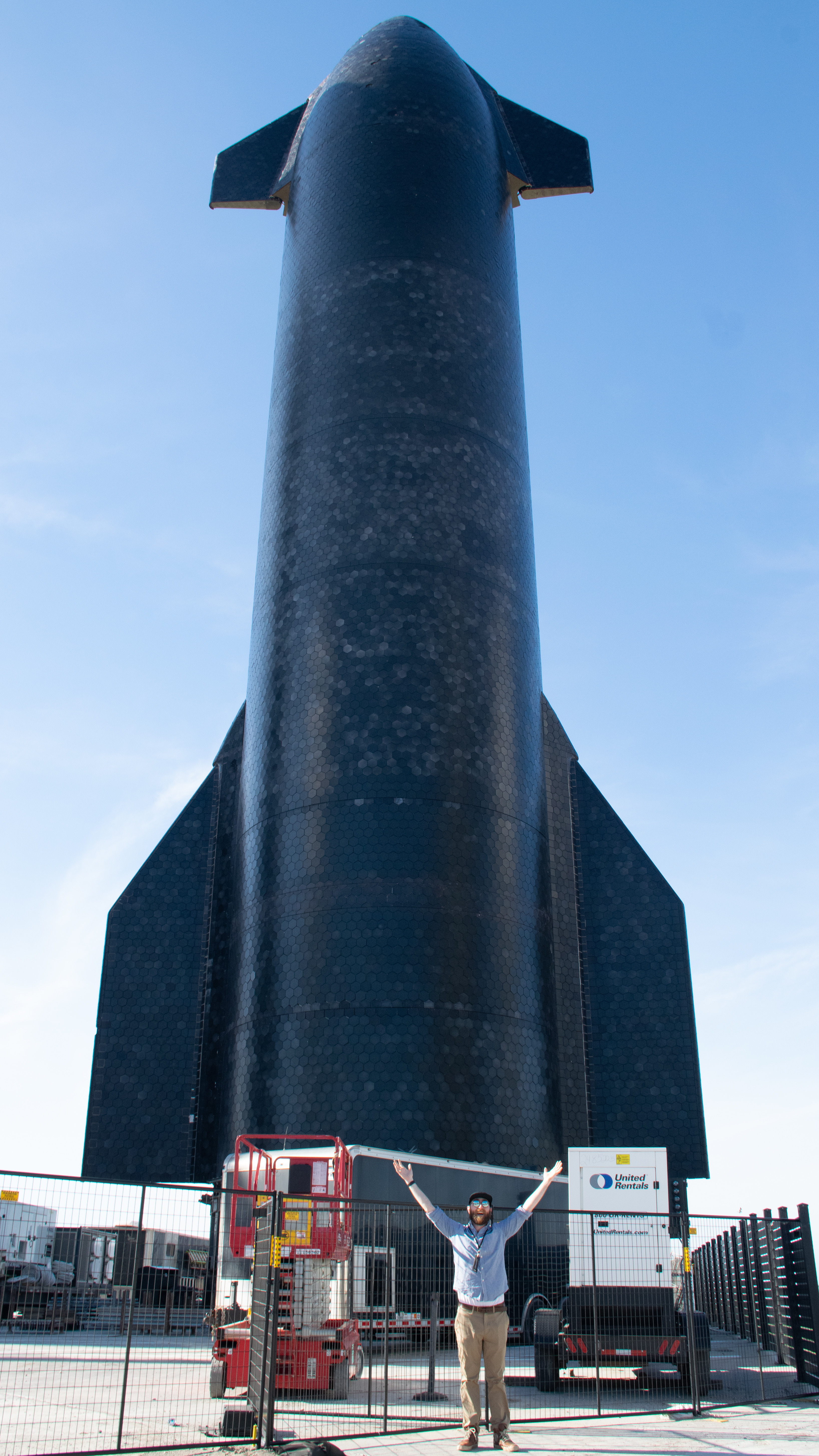
A curve in the road points you toward the launch tower, and leads to an eventual end right at the shoreline. I arrived at Starbase at the end of my drive, and finally fully understood what was meant by "publicly accessible."
Cars lined the road as I drove down, looking for a place to park. As I did, I could see people walking up and down the street, some in hiking gear, some in a casual t-shirts and shorts, and some with no shoes or shirts. SpaceX fans come from all walks of life — and, it seems, in Teslas. Of the cars parked along the road, a large percentage were Teslas, which is perhaps far from surprising given SpaceX CEO Elon Musk is also head of the electric car company, and many SpaceX fans share an affinity for the controversial billionaire.
All that aside, everyone there was there for one reason: Starship. And it was the perfect afternoon to spend strolling around the dunes. SpaceX began stacking Starship just after I arrived and the sun started a fast fall into an early autumn evening. I set up some time-lapse cameras and tried to allow myself a few moments to admire the gargantuan vehicle before getting to work.

For me, space has always held the possibility to serve as a great unifying force for humanity. The wonder of the unknown, the drive to explore and the yearning to understand and study the cosmos as an avenue to understanding our own origins are ideas that resonate with many. Speaking with people at Starbase, they see these same ideas symbolized in Starship.
"I think that this has the potential to really reshape the future of the next few decades, what our world, what our universe is going to look like, and I can't wait to see it happen," Lauren Krahwinkel told me while I made my way around the rolling, sandy terrain. Lauren spent three whole days in her car to get to Starbase. When she arrived, she met Amanda Schrader, who also shared her hopeful excitement. Amanda sees Starship as a turning point in human spaceflight, and thinks seeing the rocket fly will inspire more people. "It's the awakening. It awakes people to a future. Gives them a chance," she said.
Other sentiments around Starbase were the same — people just ecstatic that the futuristic-looking rocket poised to fly in just a couple days could somehow usher in a new reality of space travel. "We're here to witness history," Lauren said. "I figure 20, 30 years down the line, I want to be able to tell the story of how I was here when it happened."
Rocket stages getting stacked is not an everyday sight many are accustomed to seeing. For most launch vehicles, sections are assembled in high-bays like NASA's Vehicle Assembly Building (VAB) in the weeks leading up to a mission. So, seeing the giant "chopstick" arms of the launch tower casually lift Starship to stack on its Superheavy booster in less than an hour was quite the thing to witness.
Remote camera setup for photographers was the next day, and by the time we arrived on-site, though it had not yet been confirmed, there was evidence that the launch scheduled for Friday, Nov. 17, would be delayed. Chiefly, the time of SpaceX's livestream slipped to Saturday, but those at Starbase also noticed de-stacking hardware headed back to the pad. That was a clear indicator that we'd be waiting an extra day for launch, at least, but the fact that SpaceX can stack, unstack, and then stack again a rocket they're intending for imminent launch is a feat that should not go ignored.
The launch was only delayed one day, due to an issue with a grid-fin actuator on the Superheavy booster. I took that time to chat with folks to see if the slip in schedule would be sending anyone home. Not surprisingly, no one I spoke to intended on missing Starship's launch, which moved to Saturday, Nov. 18.
Saturday's launch was incredibly well-timed. The launch window opened shortly after sunrise, which created a fantastic backdrop of colors for Starship to climb as it ascended the sky. 7 a.m. (1200 GMT) was the scheduled launch time, with a twenty-minute window they could slip into in case any quickly-solvable issue were to arise.
Related: These SpaceX fans say they'll stay after 1-day Starship launch delay to Saturday
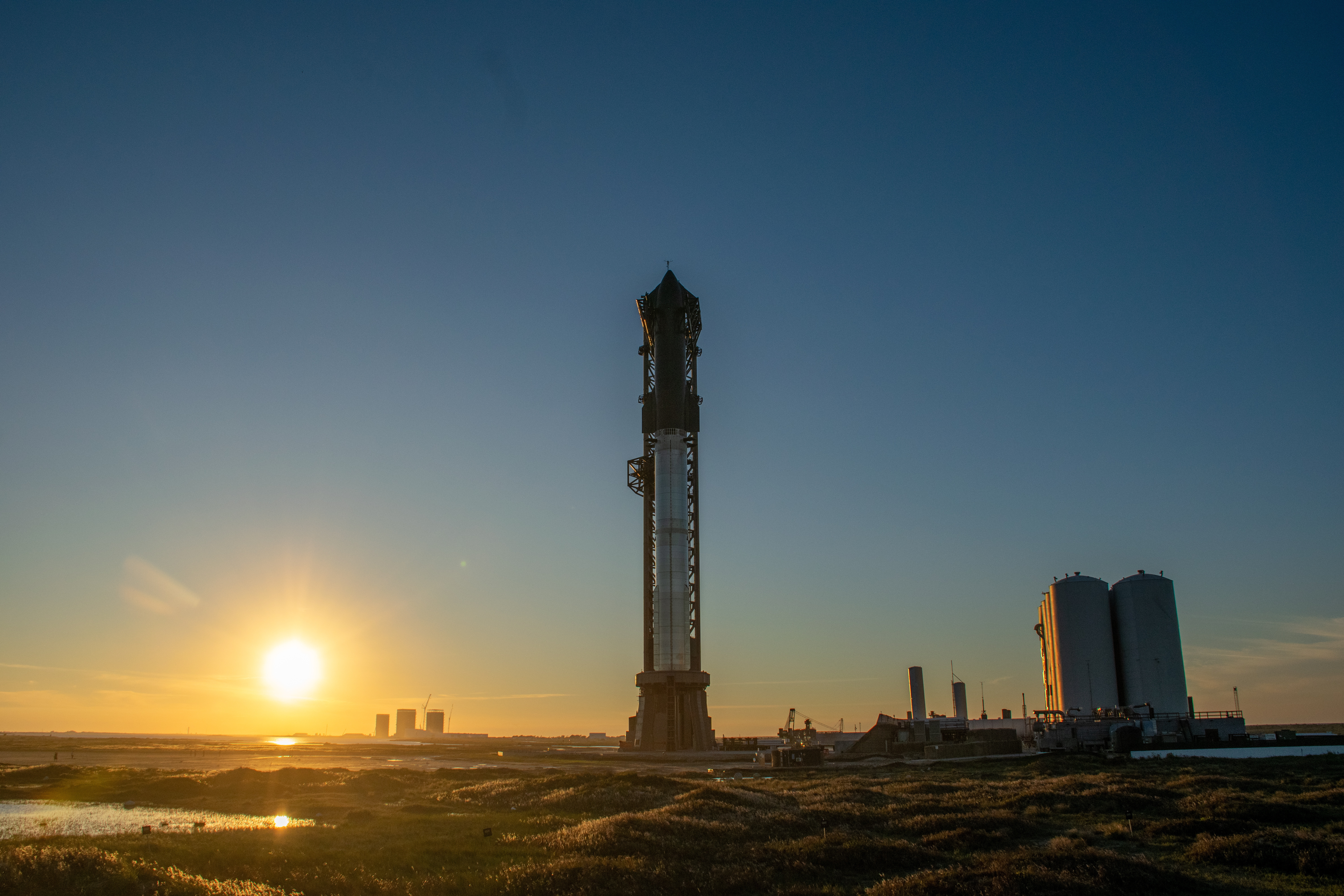
There is a park and amphitheater along the beach on the bottom tip of South Padre Island, and it's there that many gathered for Saturday morning's launch, and where I planned to watch from as well. My hotel was only 1 mile (1.6 kilometers) away, but because of my cameras and other gear, I decided I was going to brave the busy morning streets on launch day and drive the short distance.
That was the wrong choice.
I set my alarm for 3:45 a.m. EST (0945 GMT) Saturday morning, and was in my car driving out of the parking lot by 4 a.m. EST (1000 GMT). That's as far as I got. As soon as I reached the actual road, I realized I had vastly underestimated just how early people would show up to claim to viewing spot. Police escorts lined the street in increments, and for the several minutes I sat stagnant in my car, no one moved an inch. So, I bailed.
I turned my car around, parked back in my hotel's lot, pulled out my gear and starting hoofing it toward the beach. So what if I sweat through my shirt? I was not alone. By the dozens, others were walking down the sidewalks with me, dreary, but buzzing with excitement. As it was, I arrived with maybe a hundred or so people lining our section of the shore, and set up my cameras well before I would've been able to do so if I'd stayed in my car. The line to park was endless, and was still slowly inching along as I began playing with camera exposure settings, sitting in my folding chair near the edge of the beach.
Our viewing location sat just 5 miles (8 km) from Starbase, with the channel from Laguna Madre into the Gulf of Mexico spanning the gap between islands. From there, Starship stood as the only discernible thing on the horizon. The sun began to rise as the masses settled in for the rocket's big moment, and the crowd grew increasingly quite in anticipation as 7 a.m. (1200 GMT) creeped closer. Dispersed through the scattered conversations, livestreams of the launch could be heard playing from people's devices, none of them truly in sync with any other. As the sun rose, it shined a light on the venting fumes of Starship's fueling exhaust and the misty fog surrounding the launchpad. "30 seconds," someone in the crowd yelled.
I gripped my camera and peered through the view-finder and waited. A minute or so passed. Nothing. I looked at my watch — 7 a.m. Some, myself included looked around for some sort of update. Someone else yelled. "Here we go!"
I looked through my camera again, and a large plume erupted from the launchpad, and an orange light began to glow from deep in the dust. People cheered as Starship rose, pushing past the shroud, heaving itself upward with all 33 of Super Heavy's powerful Raptor engines. Now it was anybody's guess what would happen next.
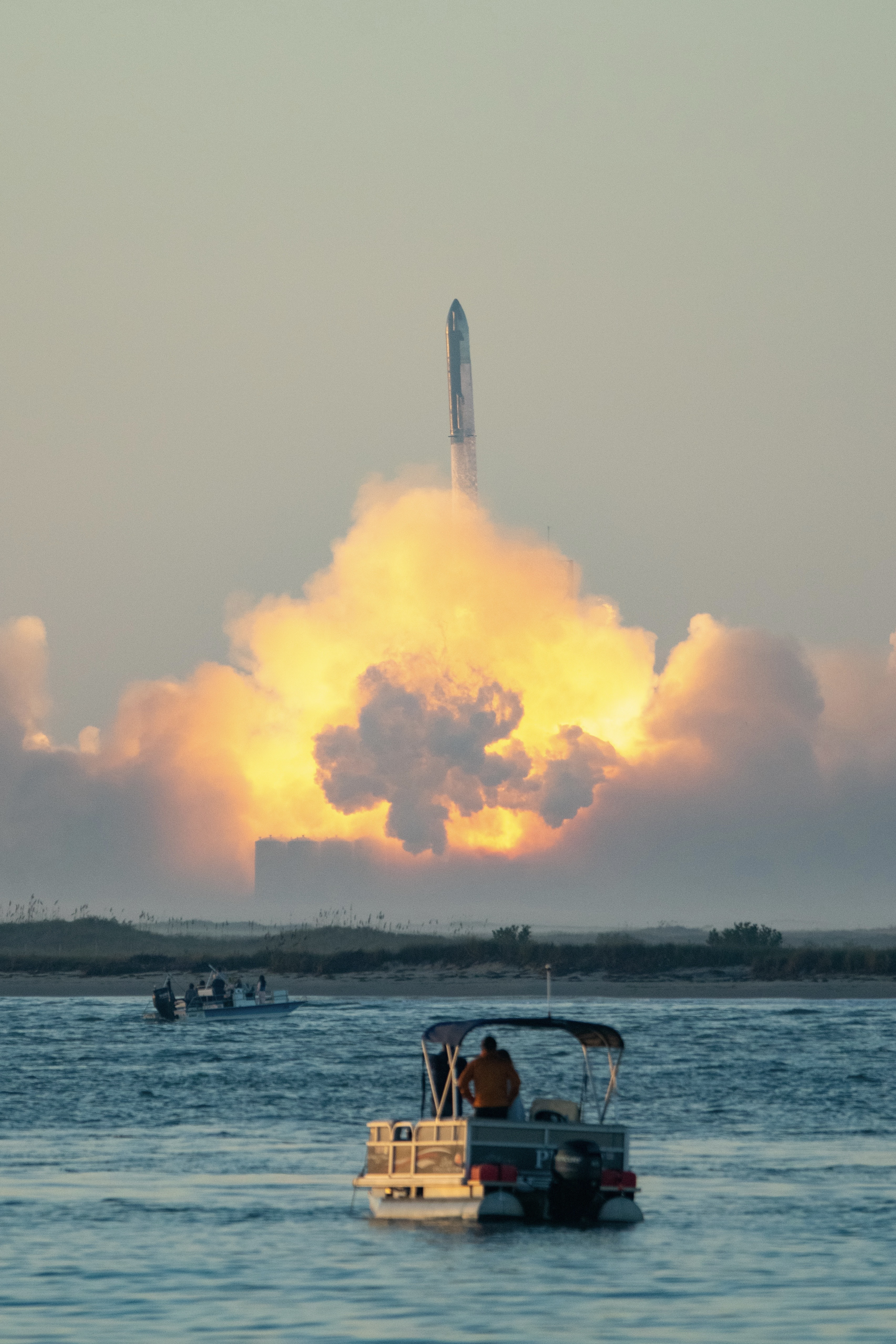
Last April, during Starship's first flight, IFT-1, the rocket's engines left a massive crater in the concrete at the launchpad, and Starship failed to separate from its Superheavy first-stage booster. The stack ended up doing several summersaults in the air before the flight termination system initiated what SpaceX likes to refer to as a "rapid unscheduled disassembly," simply meaning it blew up.
SpaceX addressed both these issues in the interim between launches by installing a new steel plate and water deluge system at the launchpad, and employing a "hot-staging" maneuver for Super Heavy booster separation.
Five miles (8 km) is not a distance traveled instantaneously by sound waves, even those created by the immensely powerful thrust of Super Heavy's 33 Raptor engines. As the rocket cleared the tower and gained altitude, we waited on the shore in anticipation of the crackling rattle of ignition. A silence had fallen, and then a roar like the stampede of a thousand lions hit us all at once as fire continued to spew from Starship in the distance. More cheers.
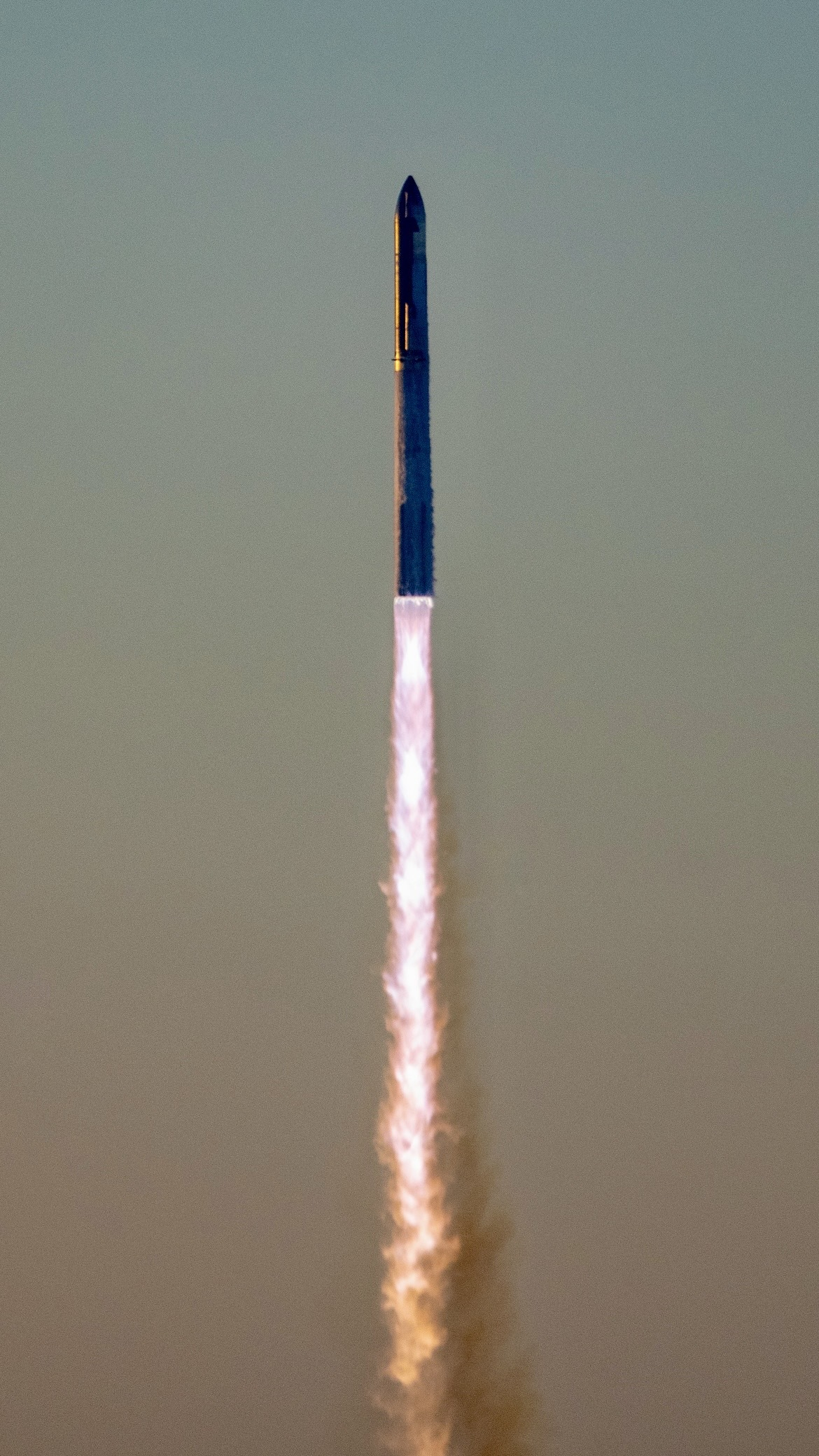
It was immediately evident this flight was performing better than the first. Even to the unaided eye, it appeared that all 33 of Super Heavy's Raptor engines remained lit, and the rocket seemed to be following a nominal trajectory skyward.
One minute passed. Two minutes, and the rocket shrunk to a point of light in the sky, but then a small burst, and the light turned into two points, which began to move away from each other. Stage separation!
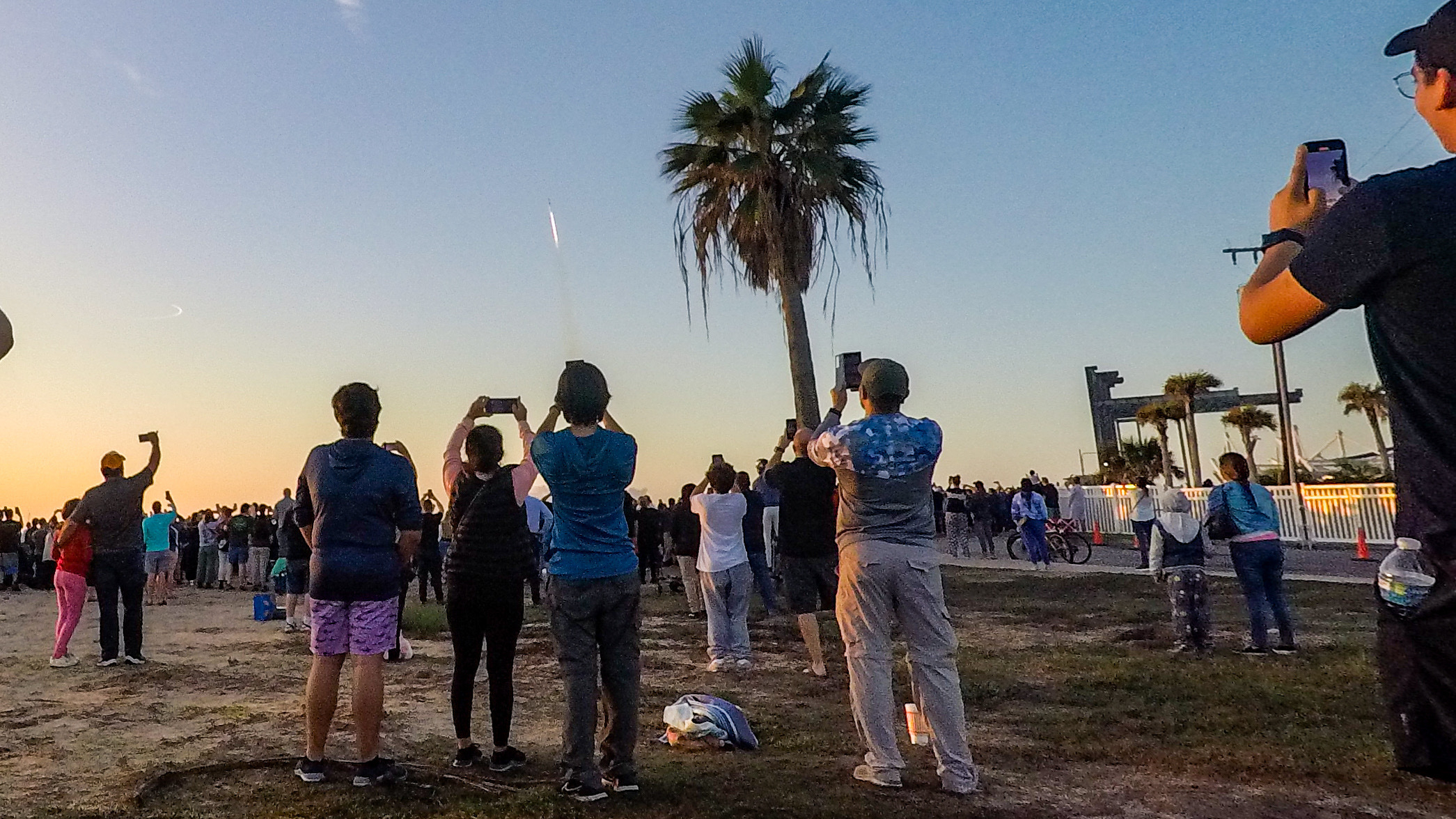
The cheers that had turned into the awestruck gazes of the crowd erupted again with even more intensity. No matter what happened next, this was the milestone the masses were waiting to celebrate. Successful stage separation meant this launch surpassed the rocket's first test, and that means progress.
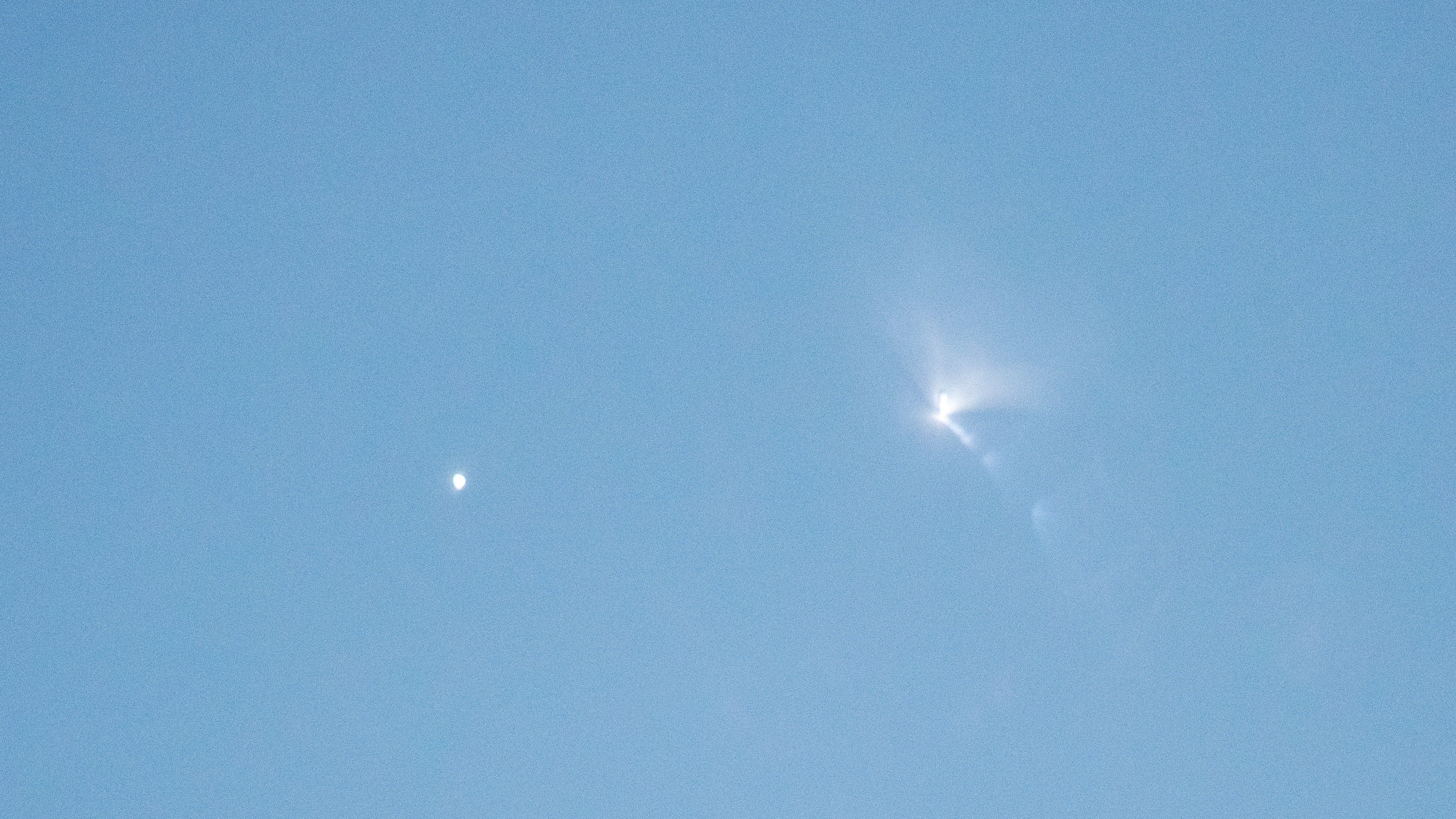
What did happen next is why many unfamiliar with SpaceX look upon that celebration with confusion. The rocket exploded.
In what many in the initial moment first thought was the "jellyfish" effect sometimes witnessed during Falcon 9 launches, when the plume from the rocket engine expands in planet's thinning atmosphere, illuminated high in altitude by the sun's rays that have set on the ground below, what they were actually witnessing was Super Heavy's flight termination protocol executing its abort command. A white gaseous cloud burst from the pinpoint of light where the Super Heavy booster had once shown in the sky, and, as it expanded, the realization of the boosters end fell on the beached onlookers. A disappointment, yes, but Starship's point of light continued onward, and left a lingering sense of encouragement in the air. Then it faded.
The show was over. From the beach on South Padre Island, the people had seen what they had come to see — the largest rocket in history launched successfully. Before livestream coverage had even concluded and Starship's fate above the atmosphere revealed (it blew up too), many people began packing their things to leave. But their awe did not diminish.
Folding chairs, collapsing tripods and fastening little humans into strollers, conversations began about the stupendous experience. The roar and rumble from the engines, the beautiful diamond-pointed convergence of the flames, speculation about which prototype iteration would fly next and when — all anyone was talking about was Starship.
And therein lies my seasonally-appropriate gratitude at the center of this piece. I am thankful for Starship. Despite criticisms of SpaceX or its controversial CEO Elon Musk, or the company's fast and loose culture of blowing things up in the name of progress, it cannot be denied that Starship is brining people together in a wave of enthusiasm for spaceflight that is based in the hope of humanity becoming united as an interplanetary species. Those are some seriously hopeful, Star Trek-level aspirations for mankind, considering the tumultuousness that seems to be ever increasing across the globe, and that people can still come together for that kind of cause gives me hope too.
For the first time in a generation, people are seeing a future in spaceflight. Not since the introduction of the space shuttle has the public's eye been so focused on efforts to reach the stars. NASA, too, has its eyes on Starship, and is relying on the spacecraft to land astronauts on the moon as a part of the Artemis program. That puts Starship on the critical path for the space agency, essentially making it too big to fail. Starship's success leads to NASA's success, and NASA is determined to return the moon.
Following the conclusion of Saturday's launch, after I had packed up my things and hiked back up South Padre Island to my hotel, I awaited word that the launchpad was safe for media to go pick up remote cameras. For launches at KSC, remote camera pick-ups usually take place a couple hours or so after a launch, and that's from tried and tested launchpads that have seen hundreds of rocket launches. For Starship, which all but obliterated the launchpad on its first launch, I honestly thought we'd be lucky to retrieve our cameras the same day.

To my amazement, not only was media allowed to go collect camera gear within just a few hours after launch, the road to Boca Chica beach was already completely reopen to the public.
Well before I was able to make the hour-drive back out to Starbase, people were once again roaming the sand dunes, which were seemingly untouched by the morning's launch. But now, where the world's largest rocket had stood a few hours prior, stood just the launch tower, it's chopstick arms lowered and opened wide, as if longing to hug the next Starship in line for launch tests.
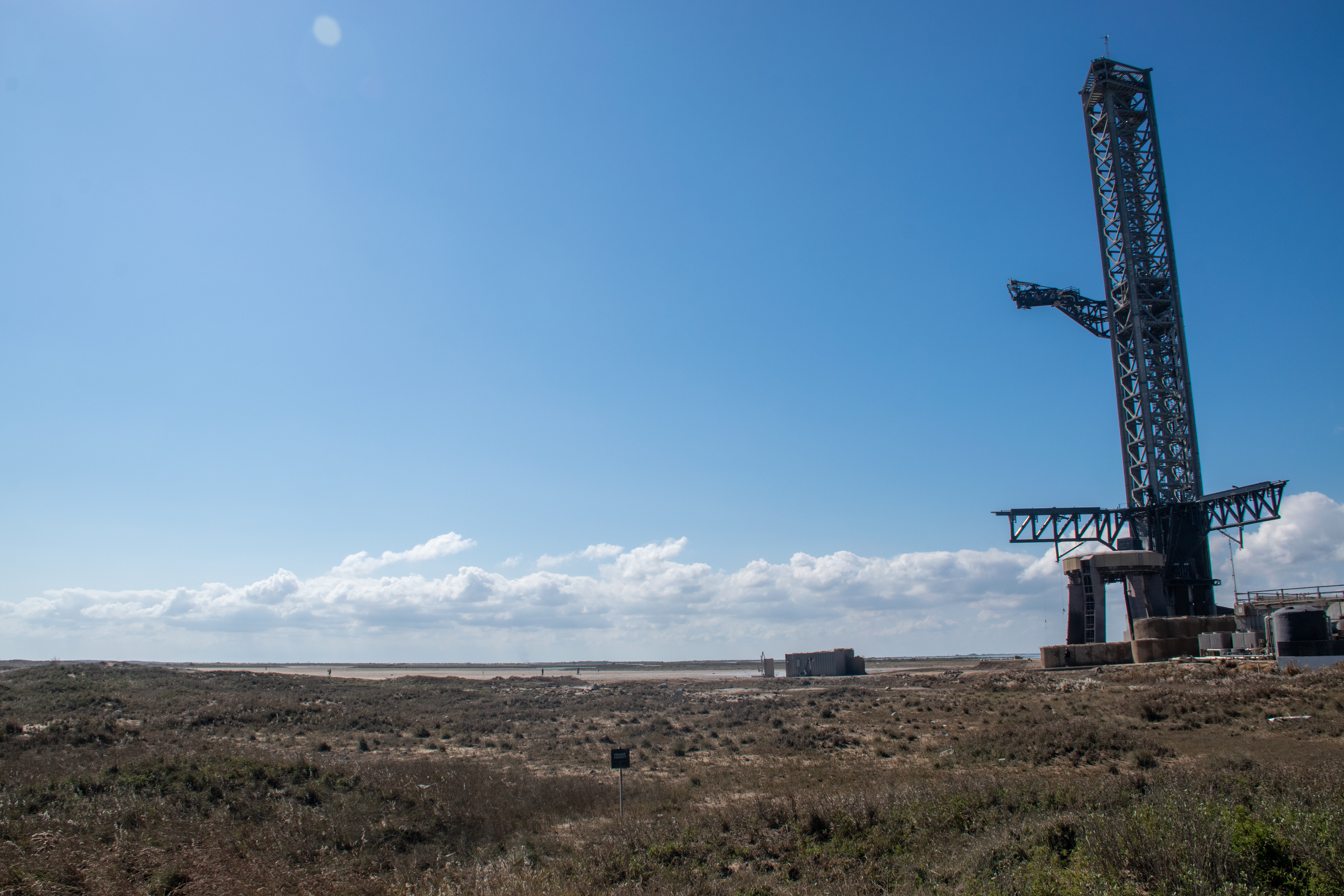
The grounds were calm, and the buzz from the people walking the sand was more subdued. There was a real sense of something missing. I think we all wanted to give Starship a little hug.
I left early the next day. So early, in fact, that the woman behind the desk when I went to check-out at my hotel thought I was coming in from a late night instead of about to hit the road. Many around town stayed out late celebrating Starship's success. Despite the explosions, it was hard to see Starship launch and not celebrate it as a success. Can you imagine? A rocket that could actually make humanity interplanetary? A launch vehicle that can carry 100 people and more to deep space? It sounds like science fiction.
I can't wait to see it launch again.
